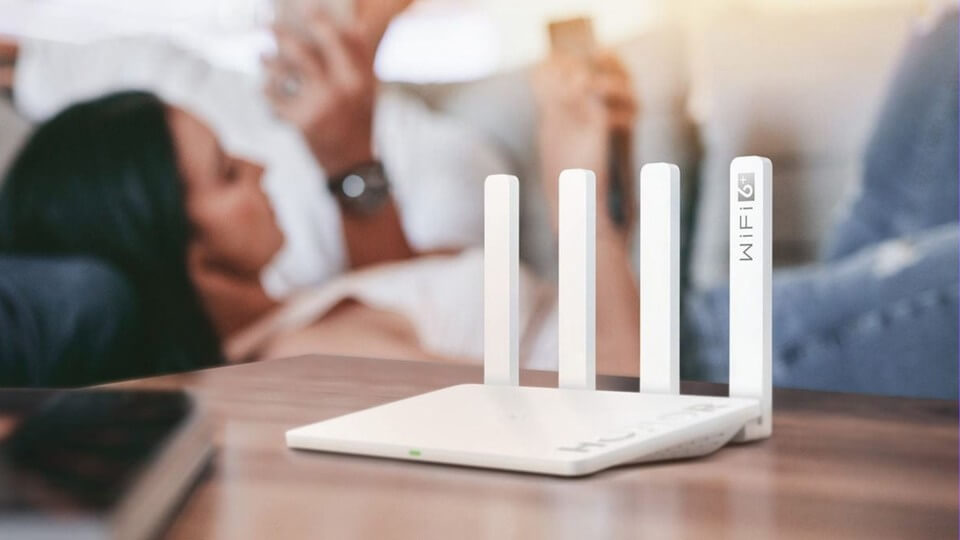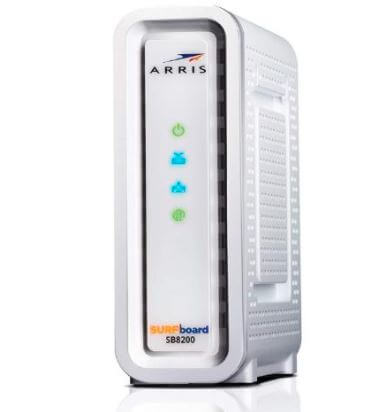Your router is probably in the wrong position – with these 7 tips it works better
In the closet, on the floor, or even in the basement: If the router is in the wrong place, this often means a fast connection is lost. 7 tips to optimize the position of your router.
Even if the wireless connection was frowned upon by gamers for a long time: Few devices are as essential for today’s work from the home office as a good WLAN router. Some people are willing to spend a good amount of money on a fast WLAN network.
It’s just stupid if you forgo the optimal signal strength just because you placed the router in the wrong place. For the best possible connection, not only the right product, but also the placement of the same is crucial. It’s good that you can find out with a few easy-to-implement steps.
If you already know, you can quickly check the current position with our checklist. For those who want to place their router correctly for the first time, there are detailed instructions below with explanations and details worth knowing.
Checklist: Is the WLAN router in the best place?
- The router should be near rooms where you actively use WiFi
- The router should be as central and as high up as possible
- The router should not be hidden behind furniture or closet doors
- The router should not be placed next to electronic devices
- The antennas of the router should point in different directions
- The router’s network coverage should not have any blind spots
- Repeaters can extend the range of the router beyond its limits
1. Where do you need WiFi most often?
The first question everyone should ask themselves after buying a router is: Where do I need fast WiFi anyway? In most cases, we use the connection primarily in the study and living room. But other applications are also conceivable. Maybe you stream a series on your bedroom TV in the evening? Or do you like to work with your laptop on the balcony in the summer?
The router should be placed as close as possible to as many places as possible where you use WiFi regularly and to a large extent. In the best case, all these places are on one floor. That’s where the router belongs – because nothing is as poisonous for the WLAN connection as walls and ceilings!
2. The right position? As centrally as possible and as high up as possible
After you have found out on the basis of your everyday WLAN use on which floor and in which room the WLAN router fulfills its purpose best, it is time to determine the exact position.
So that the signal can reach all corners of the room or rooms, it should be set up as centrally as possible. WiFi that only works well in one corner of the room is of little use in most cases.
It also makes sense to place the wireless router as high up as possible. In this way, the radio signal can pass over furniture undisturbed. WLAN professionals rely on wall mounts, which are available from various online retailers for just a few euros, and mount the router directly on the wall.
Everyone else who rejects this for aesthetic reasons or for whom the hurdle is too high should still make sure that the router is set up as high as possible. Cupboards or chests of drawers on which the router can find its new home are helpful here.

3. WLAN routers like it open
As already mentioned, there is nothing worse than ceilings and walls when it comes to good WiFi connections. But other obstacles also affect the signal strength. You should therefore place your router as openly as possible. The rule of thumb is: If you can see the router, nothing stands in the way.
Closed cupboards in which you house your WLAN router are therefore not recommended for the optimal network. If there is no other way, you should still make sure that you do not store your router in a metal cabinet. A healthy distance from large metal objects is also recommended in other respects.
4. Do not disturb: electronic devices away from the router
Other electronic devices also have no place next to routers. The more of these that are near the WiFi router, the higher the chance that there will be interference with the connection. These can weaken the final signal.
Above all, devices that use the same frequencies as the WLAN router should be avoided. Microwaves are particularly important here. Like WLAN routers and many other electronic household devices, they also use the 2.4 GHz frequency. However, microwaves call for significantly higher power and thus swallow the router’s hopelessly inferior WLAN signal.
5. The last step: Align the antennas
Many routers have antennas that allow you to direct the signal in a specific direction. For the most extensive coverage possible, you should align them in different directions. A bit of trial and error is required until you have found the optimal alignment.
You can use your own living situation as a guide. If you only live on one floor, you should probably align the antennas horizontally. If there is another floor above the router floor that needs to be supplied with WLAN, some antennas should also be aligned vertically. That way they spark more upward.
6. And now? fine-tuning…
With the help of the tips listed above, you should already have found an optimal position for your router. But if you want to get the best out of the WLAN router, you can’t avoid fine-tuning. There are various tools that can be used here.
If you own a Fritzbox router from AVM, you can use the FritzApp WLAN ( Android / iOS ) and measure the connection speed on your smartphone. So there are not only existing blind spots in the WLAN coverage. The placement of the router can also be optimized by moving it.




